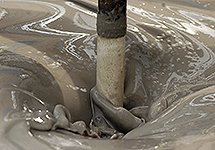 aluminum stearate 6016
aluminum stearate 6016
Aluminum stearate has been used to help suspend pigments in oil to prevent separation, to reduce the amount of oil needed to wet the pigment, and/or to increase the body of the paint by forming a gel with the oil thereby requiring less pigment.
We offer Aluminium Stearate 6016 that is an anti-foaming, thickening and lubricating agent used in paint, ceramic, varnish and plastic industry. Aluminum Stearate surfactant is a powdered defoamer used primarily in water-based muds.
If you do use them they certainly do a good job of thickening the paint to a buttery consistency and prevent the separation of pigment and binder in the tube. The recommendation against then is not that they don’t do the job; it is more about maximizing the purity of pigment color and strength which means minimizing any additive. Because beeswax is heavier than Aluminum Stearate 2% Beeswax is a lot less additive in the tube than 2% Aluminum Stearate.
Aluminum monostearate is an organic compound which is a salt of stearic acid and aluminum. It has the molecular formula Al(OH)2C18H35O2. It is also referred to as dihydroxy (octadecanoic-O-) aluminum or dihydroxy(stearate)aluminum.
It is used to form gels in the packaging of pharmaceuticals, and in the preparation of colors for cosmetics. It is usually safe in commercial products, but aluminium may accumulate in the body.
| METALLIC STEARATE | TOTAL ASH % | FREE FATTY ACID % | MOISTURE % | SOFTENING POINT °C | APPEARANCE |
MAJOR APPLICATIONS |
| Aluminum Stearate 6016 | 9.5 | 3.0 | 2.0 max | 135 | White powder |
Gelling agent, Waterproofer |
| Aluminum Stearate 205 | 8.3 | 2.5 | 2.0 max | 110 | White powder |
Gelling agent, Anti-stick agent |
Metallic stearates are compounds of long-chain fatty acids with metals of different valencies. The most important metallic stearates, in terms of quantity, are the metallic stearates of aluminium, calcium, magnesium, and zinc.
The main advantage is their manifold range of use. The most important ones are lubricating properties, separating properties, water repellency, gelling capacity, stabilizing effect, foam inhibition, acid scavenger.
Fanchem metallic stearates are available in different product forms: as fine powders with a large surface, as prills, as flakes, as pastilles, as AV-granules, as rodlike-granules.
Metallic stearates are compounds of long-chain fatty acids with metals of different valencies; some metallic stearates are not soluble in water, whereas other stearates, i.e. compounds of long-chain fatty acids with alkaline metals or ammonia are soluble in water. The most important metallic stearates, in terms of a number of applications and quantities produced, are the metallic stearates of calcium, zinc, magnesium, and aluminum.
Stearates of greatest commercial importance are produced from the commercial fatty acids derived from natural sources, with the predominance of those being sources containing mostly stearic acid and palmitic acids. Due to the OH-group present in the fatty acid molecule, 12-hydroxystearates are usually more soluble in polar solvents and their melting point is higher than the metal salts of mixtures of predominantly stearic and palmitic acids.
Owing to the shorter chain length of the fatty acid, the properties of laurates are greatly influenced by the respective metal base. The basic properties of metallic stearates such as water repellency and gelation are maintained, whilst lubricating and separating properties are already significantly reduced. As a consequence of the double bond present in the fatty acid, oleates have a lower melting point than the corresponding stearates.
Their solubility is usually slightly improved.
Among the many interesting properties of metallic stearates, the most important are:
- lubricating properties
- separating properties
- water repellency
- gelling capacity
- stabilizing effect
- foam inhibition

Contrary to most other lubricants and release agents, metallic stearates are characterized by their relatively high melting point. Therefore, metallic stearates in the form of a fine dry powder can act as a dry lubricant (like graphite) when used in this solid powder form. In most cases, the hydrophobic nature of metallic stearates is highly desirable.
Lubrication and release properties, as well as water repellency, are characteristics of all metallic stearates.
The special effects of these properties are determined by the cation, the chain length of the fatty acid and certain other properties of the respective metallic stearate (e.g. the water of crystallization content).
The gelling properties of the aluminum stearates are particularly effective; however, satisfactory gelation depends on the type of stearate (mono-, di- or tribasic stearate), its polarity and the viscosity and solvent properties of the liquid component.
Calcium stearate 3014, magnesium stearate 4014, and zinc stearate 5012 have to stabilize and processing aid effects in a wide range of thermoplastics. Aluminum and magnesium stearates are used as foam inhibitors for various suspensions.
Aluminium Stearate ksk6016 is a defoamer for use in water-based drilling fluids. Aluminium Stearate is insoluble in water and should be mixed with diesel at the well site approximately 3-5 %. The resulting mixture can then be poured into the mud tank to reduce the foaming problem.
Aluminium Stearate is a surface-active agent in powder form. It reduces the surface tension of the fluid that allows bubbles to form and exhibits excellent defoaming characteristics when mixed with base oil or diesel.
Applications in the plastics industry
Metallic stearates, which have been used primarily as acid scavengers, lubricants and release agents by the plastics industry, are becoming increasingly important in melt processing. In addition to optimizing production, the use of metallic stearates allows the processor to produce finished articles with smoother surfaces and lower friction.
Metallic stearates are mainly produced from organic raw materials. Therefore, they tend to degrade to some degree when exposed to excessively high temperatures, resulting in discoloration. Fanchem has developed a range of thermostable metallic stearates, which are highly resistant to discoloration when used in transparent or brightly colored thermoplastics even at high processing temperatures.





